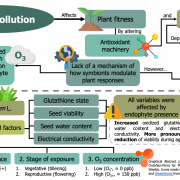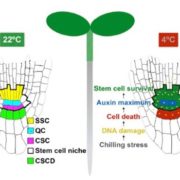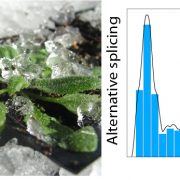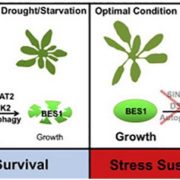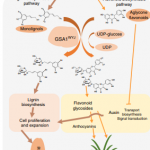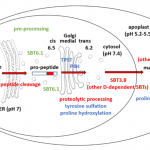Systemic signaling during abiotic stress combination in plants (PNAS)
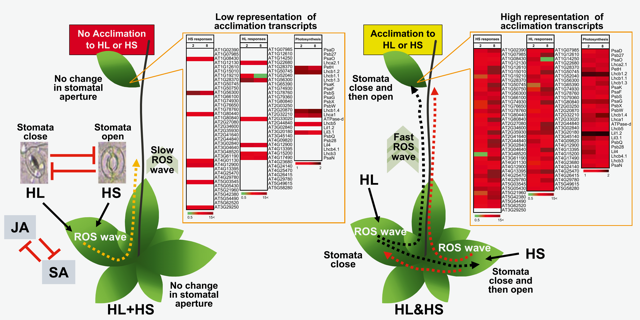 In nature, plants face multiple environmental stresses simultaneously. Plant responses to combined stresses are often not merely the sum of responses to individual stresses; in the tissue that initially perceive stresses (local tissue), plants can integrate different stress signals to elicit unique responses. Plants can also respond to stresses systemically by sending signals from the local tissue to the distal part of the plant, triggering stress-specific systemic responses important for stress acclimation. To date, however, it is unknown whether plants can integrate systemic signals simultaneously provoked by different stresses. Zandalinas et al. addressed this problem by applying high light and heat stress to the same or different leaves and analyzing transcriptome responses of systemic leaves. The authors found that plants can integrate different systemic signals, i.e., systemic responses to the combined stresses were distinct from those to the single stresses. Such responses were more pronounced when the two stresses were applied to different leaves than the same leaves; only the former condition led to acclimation to light or heat stress. By comparing these conditions, the authors showed that the local accumulation of the plant hormones SA and JA is associated with the systemic ROS signal, which may mediate transcriptional reprogramming in the systemic leaves during the combined stress. This study sheds light on the mechanisms by which plants coordinate responses to complex and heterogeneous environmental stresses at the whole-body level. (Summary by Tatsuya Nobori @nobolly) PNAS 10.1073/pnas.2005077117
In nature, plants face multiple environmental stresses simultaneously. Plant responses to combined stresses are often not merely the sum of responses to individual stresses; in the tissue that initially perceive stresses (local tissue), plants can integrate different stress signals to elicit unique responses. Plants can also respond to stresses systemically by sending signals from the local tissue to the distal part of the plant, triggering stress-specific systemic responses important for stress acclimation. To date, however, it is unknown whether plants can integrate systemic signals simultaneously provoked by different stresses. Zandalinas et al. addressed this problem by applying high light and heat stress to the same or different leaves and analyzing transcriptome responses of systemic leaves. The authors found that plants can integrate different systemic signals, i.e., systemic responses to the combined stresses were distinct from those to the single stresses. Such responses were more pronounced when the two stresses were applied to different leaves than the same leaves; only the former condition led to acclimation to light or heat stress. By comparing these conditions, the authors showed that the local accumulation of the plant hormones SA and JA is associated with the systemic ROS signal, which may mediate transcriptional reprogramming in the systemic leaves during the combined stress. This study sheds light on the mechanisms by which plants coordinate responses to complex and heterogeneous environmental stresses at the whole-body level. (Summary by Tatsuya Nobori @nobolly) PNAS 10.1073/pnas.2005077117


